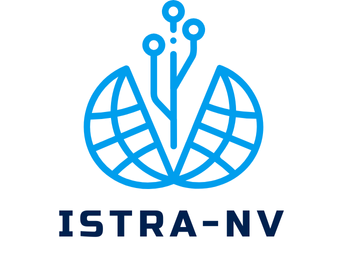Athletes and organizations alike face unique challenges in achieving long-term success and sustainability. By adopting innovative strategies, teams can foster growth, adapt to market shifts, and enhance their resilience. This exploration of sports strategies emphasizes practical approaches for sustainable development and thriving in a competitive landscape. Discover how these tactics can transform your vision into actionable results, enabling not just survival but flourishing success in the ever-evolving sports industry.
Effective Training Strategies for Sustainable Growth
In the realm of athlete development, individualized training programs are paramount. Tailoring training strategies to fit an athlete's unique needs maximizes their potential for performance enhancement. By focusing on personal strengths and areas for improvement, these programs ensure that athletes remain engaged and motivated.
Additional reading : Fitness Tips for Athletes in 2024 and Beyond
Incorporating technology and analytics into training strategies is revolutionizing sports. Advanced tools and data analytics provide insights into performance metrics, enabling coaches to make informed decisions. For instance, wearable tech can monitor an athlete’s heart rate and movement, offering real-time feedback. This allows for adjustments in training intensity, ensuring optimal performance while minimizing injury risk.
Top sports teams have successfully employed these methods, showcasing the effectiveness of modern training strategies. The Golden State Warriors, for example, integrate data analytics to fine-tune player performance. By analyzing shooting patterns and fatigue levels, they craft personalized training regimens that enhance player capabilities.
In parallel : How to Train Like a Pro for a Successful Year
In conclusion, the combination of customized training strategies and cutting-edge technology fosters sustainable growth in athletes. By leveraging these tools, coaches can optimize training outcomes, paving the way for future success in sports.
Management Practices that Foster Long-Term Success
In the world of sports management, effective leadership is a cornerstone for achieving long-term success. Leaders in sports organizations play a crucial role in setting the vision and direction, making strategic decisions that align with the team's goals. They cultivate an environment where athletes and staff can thrive, ensuring that everyone is working towards a common objective.
Organizational development is another key aspect, focusing on building a positive team culture. This involves creating an atmosphere of trust and collaboration, where team members feel valued and motivated. Strategies such as open communication, recognition of achievements, and promoting inclusivity are essential. These practices not only enhance team morale but also lead to improved performance on and off the field.
Examining case studies of successful management practices in sports can provide valuable insights. For instance, the New Zealand All Blacks rugby team is renowned for its strong leadership and cohesive team culture. Their emphasis on humility, accountability, and continuous improvement has led to sustained success. Another example is FC Barcelona, where a focus on youth development and a clear playing philosophy have been instrumental in their achievements.
In summary, the integration of effective leadership and organizational development strategies is vital for fostering long-term success in sports management.
Community Engagement and Its Impact on Growth
Engaging with the community is a powerful strategy for sports teams aiming for sustainable growth. Community engagement initiatives foster a sense of belonging and loyalty among fans, which is invaluable for any team. By investing in community outreach programs, sports organizations can build a robust local support base, enhancing their reputation and influence.
One effective approach is creating programs that address local needs, such as youth sports clinics or charity events. These initiatives not only promote the sport but also demonstrate the team's commitment to the community, strengthening fan relations. Fans are more likely to support a team that shows genuine interest in their well-being and development.
Sponsorship deals can also play a crucial role in community engagement. By partnering with local businesses, teams can create mutually beneficial relationships that bolster community ties. For example, a team might collaborate with a local sponsor to host events that benefit both parties, increasing visibility and support.
Several organizations have successfully leveraged community engagement to their advantage. The Seattle Seahawks, for instance, are known for their strong connection with fans, often involving them in team activities and decisions. This approach has cultivated a loyal fan base, illustrating the profound impact of effective community engagement strategies.
Economic Factors Influencing Sports Strategies
In the competitive world of sports, economic sustainability is a crucial element for long-term success. Understanding the financial landscape is essential for sports organizations aiming to thrive. This involves analysing various revenue streams and identifying opportunities for growth.
Funding is a primary concern for many teams, as it directly impacts their ability to invest in talent, facilities, and technology. Securing diverse funding sources can mitigate financial risks. For instance, sports organizations might explore sponsorships, broadcasting rights, and merchandise sales as part of their revenue generation strategy. By diversifying these streams, teams can create a more stable financial foundation.
To illustrate, consider the case of the Green Bay Packers. They have successfully navigated economic challenges by leveraging community ownership and innovative revenue strategies. Their approach includes maximizing revenue generation through fan engagement and merchandise sales, ensuring economic resilience.
Another example is Manchester United, which capitalizes on global brand recognition. They have diversified their revenue through international partnerships and digital platforms, demonstrating the effectiveness of a robust economic strategy.
In conclusion, sports organizations must adopt comprehensive financial strategies to ensure economic sustainability. By understanding and adapting to the financial landscape, teams can secure their future and continue to compete at the highest levels.
Integrating Sustainability Principles in Sports
Sports organizations are increasingly recognizing the importance of sustainability in sports. By adopting eco-friendly practices, they can significantly reduce their environmental impact while promoting a healthier planet. This shift not only reflects a commitment to environmental stewardship but also resonates with fans who value sustainability.
To implement these principles, sports organizations can adopt several strategies. One approach is to invest in energy-efficient facilities and renewable energy sources. This can include solar panels, LED lighting, and water conservation systems. Additionally, promoting sustainable transportation options for fans, such as public transit and carpooling, can further minimize the carbon footprint of sporting events.
Youth programs play a crucial role in fostering sustainability within the sports community. By educating young athletes about environmental responsibility, these programs instil a sense of stewardship from an early age. Successful initiatives often incorporate sustainability topics into training sessions and encourage participation in eco-friendly activities, such as tree planting or recycling drives.
Several organizations have demonstrated leadership in this area. For example, the Forest Green Rovers, a football club in England, has been recognized for its commitment to sustainability. They have implemented numerous eco-friendly practices, including a vegan menu for players and fans, showcasing the potential for sports to lead in environmental consciousness.











